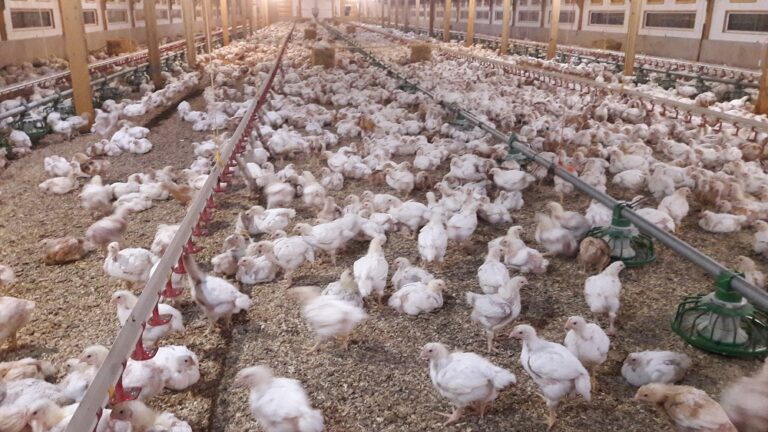Mark Howells and William Hersey, of Howells Veterinary Services, always advise their clients that water is central to every aspect of poultry metabolism, from regulating body temperature, to digesting food and eliminating body wastes. “We know that poultry consume circa twice as much water as feed – it’s a cheap nutrient, but it must be clean,” says Hersey.
Cross contamination between flocks is still a huge issue. Carry over of pathogens can be visible to the naked eye, in the: crevices, cracks and surfaces of tired buildings with wooden structures.
Whilst a lot of time and effort is rightly put into terminal cleaning and disinfection, the importance of clean drinking water in poultry houses cannot be understated. Thorough cleaning, removal of biofilms and terminal disinfection of the water lines is essential to getting the birds off to a good start.
Cleaning and then disinfecting the water delivery system must happen between every production cycle; cutting corners is a recipe for disaster.
Most producers think that they have this covered in their usual routines, but now that we have curtailed the use of antibiotics, there has never been a better time to review matters:
Water systems are often compromised by bugs hiding in biofilm. Biofilm is made of EPS (exopolysaccharide) produced by bacteria when they are resting. This sticky matrix contains more and more bacteria and forms a relatively impermeable barrier to UV light, antibiotics and particularly many types of biocides – they can’t penetrate it.
Whilst prophylactic applications of antibiotics are firmly discouraged, many farm operations sensibly administer electrolytes through the water line to rehydrate and energise chicks to help combat stress.
This type of product often leaves residues in the water line from their ingredients, which provide the perfect substrate for biofilm formation. Probiotics and multivitamins are also prime culprits in this respect.
To make matters worse, water lines usually contain warm, very slow-moving water because chicks drink so little at this early stage of production.
To combat these problems, we must disinfect the water, stop any biofilm build-up and ideally acidify the water too. (Hamid and co-workers, 2018 poultry science 97;3601-3609)
Daniel Clow, of Roxby Farm Supplies, works closely with Howells Veterinary Services in his capacity as fieldsman. Clow comments that newly placed chicks and point of lay pullets are on a knife edge; a slug of bacteria in the water is the last thing they need. “I think poor water quality is a hidden menace and is still one of the greatest challenges our industry faces – we simply have to get better at managing it if we are to realise the genetic potential of the birds”.
Clow has been delighted with product trials he has undertaken with clients, applying the multi-functional drinking water disinfectant Virkon H2O, from Lanxess, during the first 4-5 days.
Virkon H2O disinfects and acidifies water, helps protect against infection and prohibits development of the biofilm.
Broiler producers noted a much better litter quality and have perceived improved health leading to enhanced overall performance during the production period.
Clow highlights that Virkon H2O must be applied correctly following an assessment of the water quality and pH on each production site. “I develop a bespoke biosecurity programme for each client that takes into account their crop’s drinking water requirements, any scheduled waterline applications such as antibiotics, probiotics and vaccines so that I can establish the required disinfectant dosing regime,” he says.


